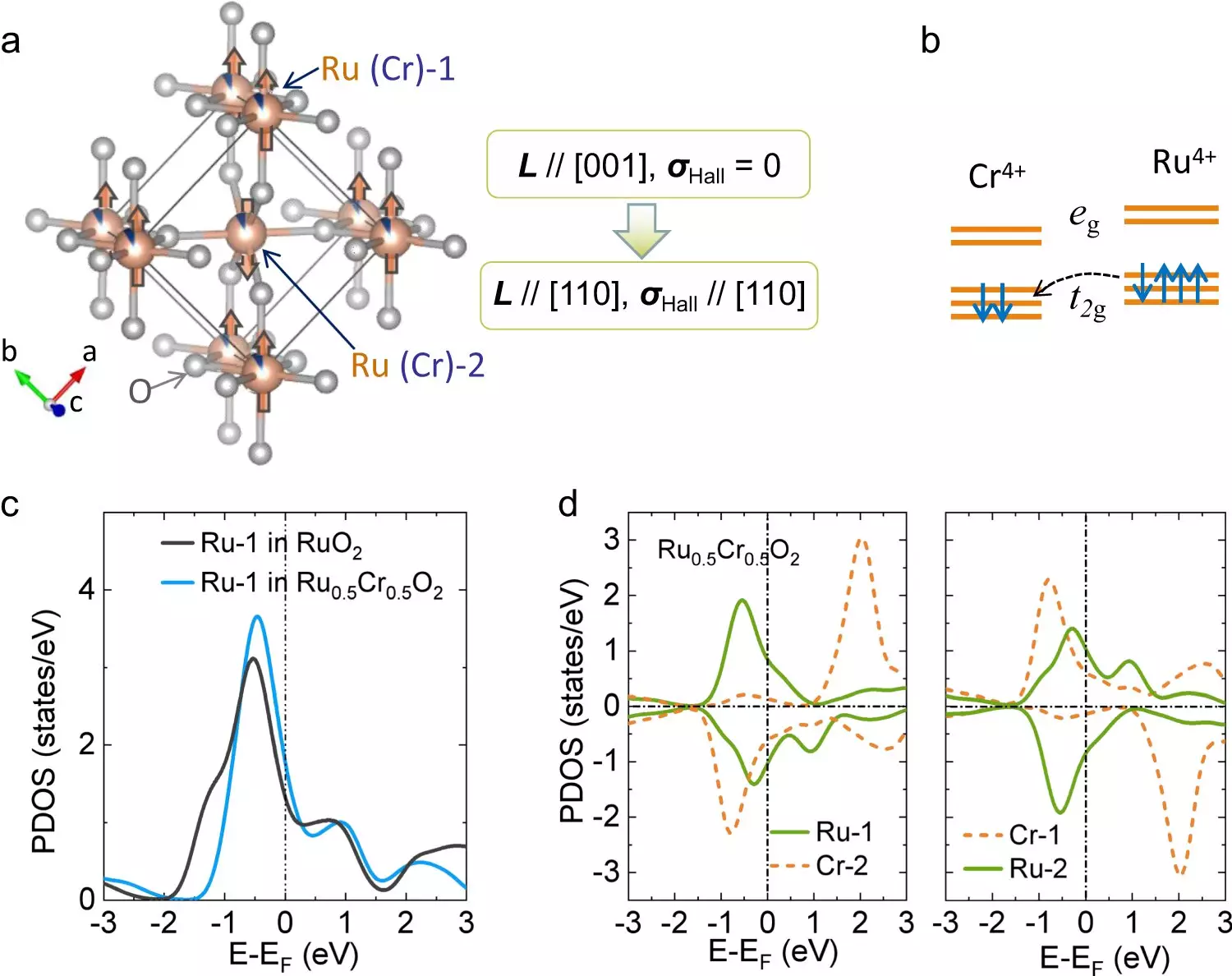In a groundbreaking development by physicists at RIKEN, a new magnetic material has been introduced that has the potential to revolutionize computer memory storage. This advancement could lead to higher memory density and faster memory writing speeds, addressing the limitations of current hard disk technology. The research conducted by the team has been documented in the prestigious journal Nature Communications.
Traditionally, memory devices such as hard disks have relied on ferromagnetic materials like iron and cobalt for data storage. These materials work by aligning the magnetic fields of individual atoms when a magnetic field is applied. However, ferromagnets have inherent drawbacks that make them less than ideal for high-density data storage. Neighboring areas can interfere, leading to spontaneous magnetization that can corrupt data. Additionally, the process of switching magnetization patterns in ferromagnetic materials is slow, limiting memory writing speeds.
Antiferromagnetic materials provide a promising solution to the challenges posed by ferromagnets. In these materials, the magnetic fields of adjacent atoms align in opposing directions, reducing interference between neighboring areas. While antiferromagnets do not exhibit magnetization that can be observed directly, physicists have proposed leveraging a phenomenon known as the “anomalous Hall effect” to encode and read out data in these materials successfully.
The anomalous Hall effect allows for the manipulation of electrons in antiferromagnetic materials, enabling the storage and retrieval of data without the need for an external magnetic field. By introducing a small amount of chromium to an antiferromagnetic metal containing ruthenium and oxygen, the researchers at RIKEN were able to trigger the anomalous Hall effect. This alteration in the material’s symmetrical structure facilitated the observation of the effect without the presence of a magnetic field.
While the anomalous Hall effect has been observed in more complex antiferromagnetic materials in the past, this study marks the first time that the effect has been demonstrated in a simple co-linear structure. This characteristic makes the material highly attractive for practical applications, as it can be easily fabricated in thin film form. According to Meng Wang of the RIKEN Center for Emergent Matter Science, this new material holds great potential for enhancing computer memory storage capabilities.
The development of this innovative magnetic material represents a significant leap forward in the field of computer memory technology. By harnessing the power of antiferromagnetic materials and leveraging the anomalous Hall effect, researchers have laid the groundwork for potentially transforming memory storage in the future. With continued advancements in material science and exploration of new phenomena, the possibilities for enhancing memory density and speed are endless.


Leave a Reply